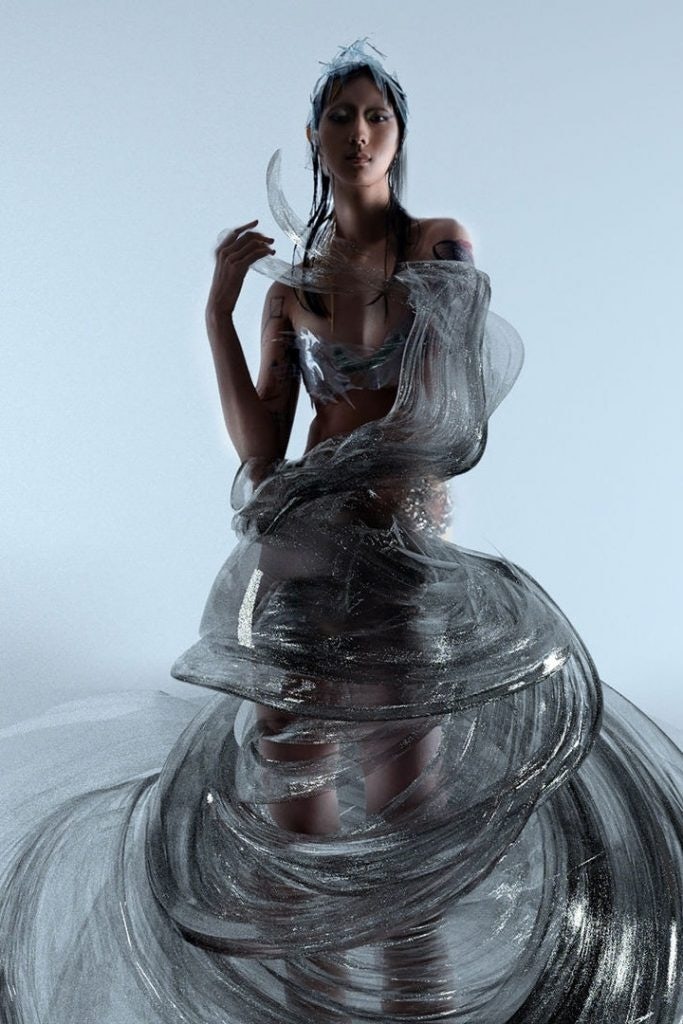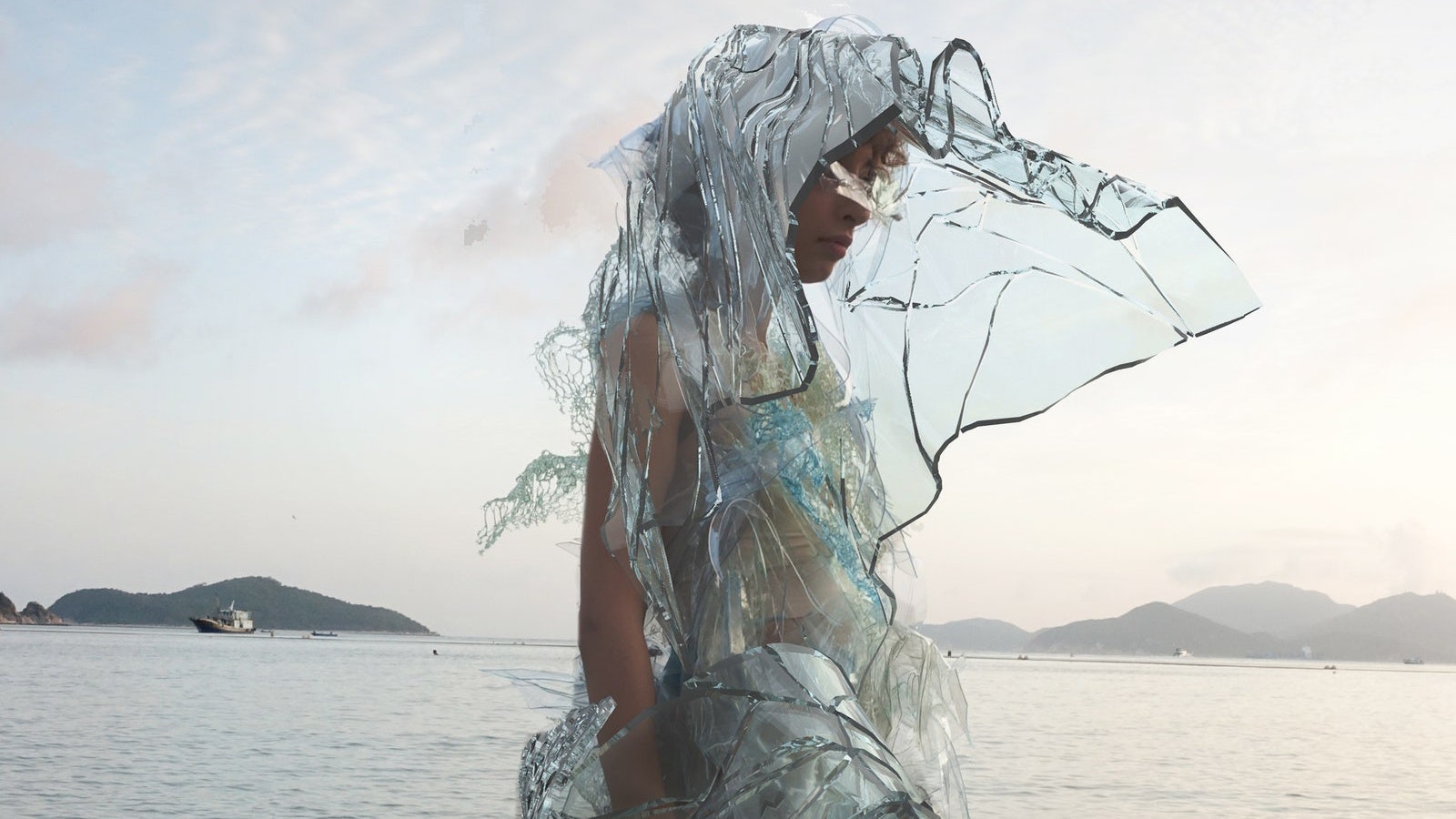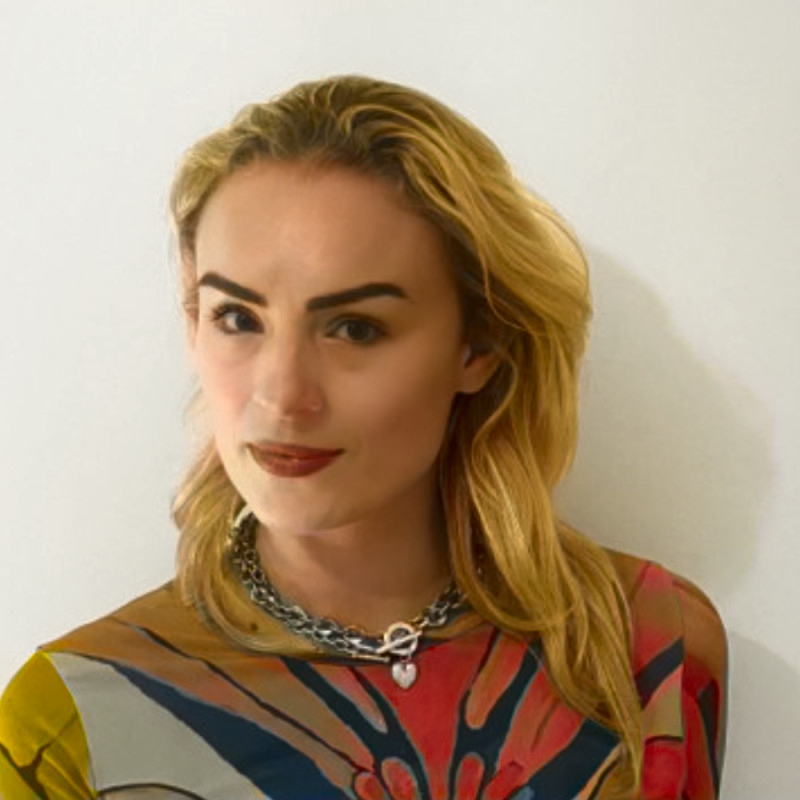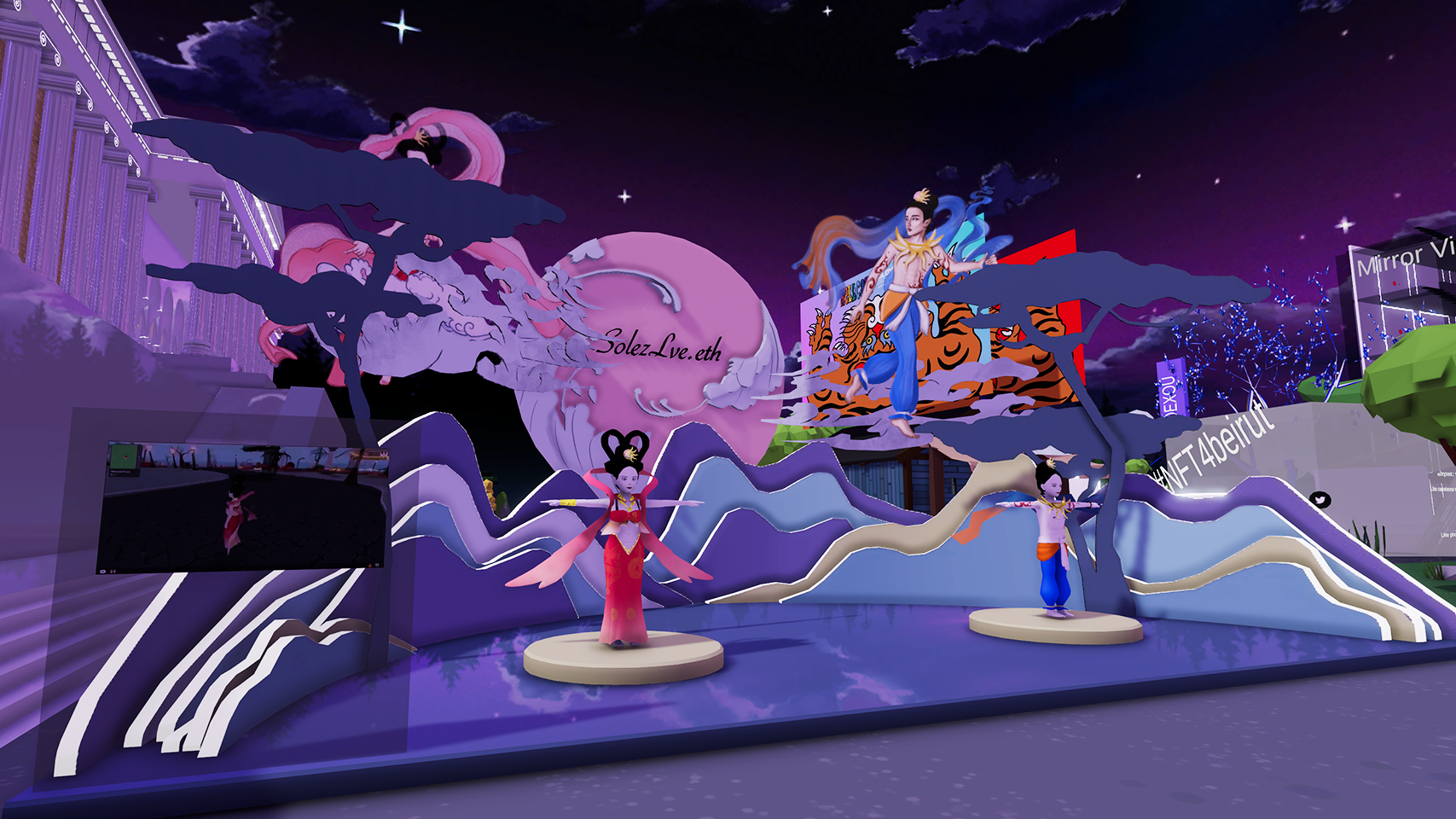Hong Kong-born Central Saint Martins (CSM) graduate Scarlett Yang fully embraces the experimentation that digital fashion offers, crafting ethereal, alien-like pieces that look plucked from the dreams of both couture runways and sci-fi movies. The designer was thus the perfect addition to the first-ever digital fashion season, currently being hosted by The Fabricant.
The digital fashion house launched Season 1 on its NFT platform, The Fabricant Studio, on February 7, allowing invitees to mint two free NFTs using digital fabrics from 14 creatives, including Yang. Her capsule with The Fabricant combines gaming avatar inspiration with human biology, exploring how clothes and movement mold identity in the virtual world, too. In total, there were 45,000 unique combinations of fabrics available for people to produce their NFTs, reflecting just how innovative and expansive opportunities are when it comes to digital creation, as well as how seamlessly collaborations can happen.
In the metaverse, the expression of fashion seems to be slowly but surely emerging with gaming collaborations from the likes of Gucci + Roblox and Louis Vuitton + League of Legends. And The Fabricant is planning to steer that evolution, said Michaela Larosse, head of content & strategy. “How we present ourselves digitally will be our point of contact with whoever we meet in these virtual spaces. The easiest way to express yourself in a virtual space is by whatever you're wearing. Garments in the studio are going to have utility in gaming platforms, so you'll be able to wear them in-game, as well as obviously trade them and collect them.”
The expression of digital fashion seems to be slowly but surely emerging in the metaverse, with gaming collaborations such as Gucci + Roblox and Louis Vuitton + League of Legends.
Maybe it will give players a chance to dress more overtly avant-garde than day-to-day life allows, such as by wearing a Yang piece to socialize in Animal Crossing or Roblox. With the launch of The Fabricant Season 1 and the increasing desirability of digital fashion, Jing Collabs & Drops decided to discuss the space and the inaugural season with one of today's most exciting talents: Scarlett Yang.
Why did you choose to enter the realm of digital fashion as a student?#
“There was a period of time in my teenage years when I was very passionate about the digital gaming, anime, and cosplay subculture, which shaped a big part of my perspective of fashion. At that point, I really enjoyed dressing up as fictional characters with friends through costume, make-up, wigs, and computer special effects. I think the contemporary reality for our generation has been that our digital ‘make-overs’ are always a big part of our own identities.
Even before and during my studies at CSM, I experimented with different concepts and fashion mediums to re-imagine digital fashion as avatar identities. I have seen huge potential as digital lifestyles play a key role in our current social life. It gives so much freedom to dress spectacularly and expressively in the digital realm rather than the physical realm, with its drastic reduction in material waste to produce its physical equivalence.”

Was digital fashion fully embraced at CSM?#
“While I was entering my final year, digital integration for fashion started to get embraced a lot more. My tutors were supportive of my exploration of this new way of making fashion and advised me how to design great fashion — no matter if it was physical or digital. I was experimenting with using algorithms as a part of my design process to generate silhouettes and shapes of 3D garments, which was, in a way, very unusual for a student project at CSM. But the school was open and critical of my outcome as usual.
Half a year before the pandemic began, I proposed to submit pure digital pieces as my thesis. However, due to the traditional academic requirements, students couldn't graduate with a non-physical collection. At that time, I planned to showcase my graduate collection made with biodegradable materials that gradually dissolve during the final showcase — then appear in its virtual format, representing eternity. But I believe the curriculum and rules within institutions like CSM and the industry are changing now.”
Did you always have plans to enter the NFT space as a digital designer?#
“Yes. NFT and blockchain fashion has been something I researched deeply since I began making 3D fashion in 2018. For the NFT space, I have been paying a lot of attention yet remained cautious. I have strategic plans for designing in the metaverse, and clean NFTs is one of them. I only work with clean blockchain technologies that do not consume large amounts of energy.”
What is your current relationship with NFTs?#
“Because I have hybrid academic backgrounds in both tech engineering and design, I am rather critical on deploying NFT fashion. I look into the technical specifics and ethos of a blockchain platform or company before committing to any new projects. I investigate where and how to release my own NFT pieces, always making sure it aligns to my sustainability design vision.”
What are you hoping to gain from your collaboration with The Fabricant studio?#
“The co-creation aspect of this collaboration with The Fabricant Studio is definitely a very unique experience. I would love to see how multiple digital creators can be involved collaboratively to create the final NFT outcome. I would also like to get some feedback from co-creators and other users on their first-hand experiences of this one-of-a-kind concept.”
How would you describe the clothing you have created on The Fabricant?#
“For people who are familiar with gaming and the metaverse, 'skin' is a term that represents the clothing of an avatar character. At the same time, this word is also the human biological organ strongly attached to our physical body. So what would our virtual ‘skin’ look like?
This capsule collection lt;Skinsgt; [膚 in Chinese] explores virtual-human wear. Within the metaverse, we run, fight, and dance. Our movements become part of our skin, using our clothing as identity. The clothing pieces get boiled down to the very essence of a virtual avatar, and each garment re-imagines how our sensual body moves in the digital realm is a part of our new selves.”
Where do you see your career going as a digital fashion designer?#
“With both a traditional fashion background and new tech area experiences, I am hybridizing my practice to explore new aesthetics of digital fashion and creating innovative style concepts for the metaverse. I am planning to produce more novel experiences for ‘wearing’ digitally through immersive experiences, VR/AR, visual magazine editorials, and clothing for games through collaborations and partnerships with brands and arts organizations.”
For more analysis on the latest collaborations, sign up for the Collabs and Drops newsletter here.


